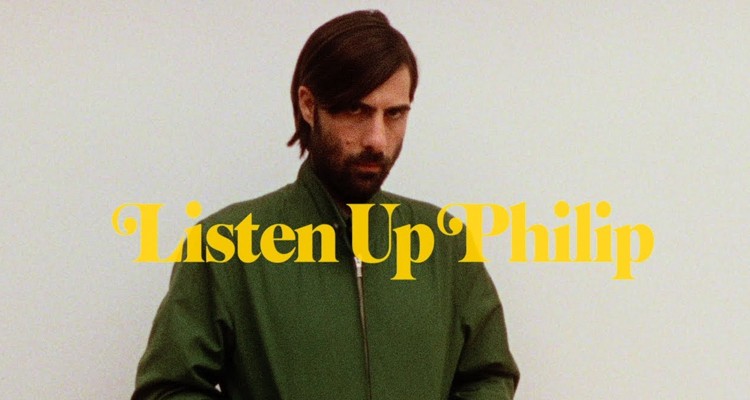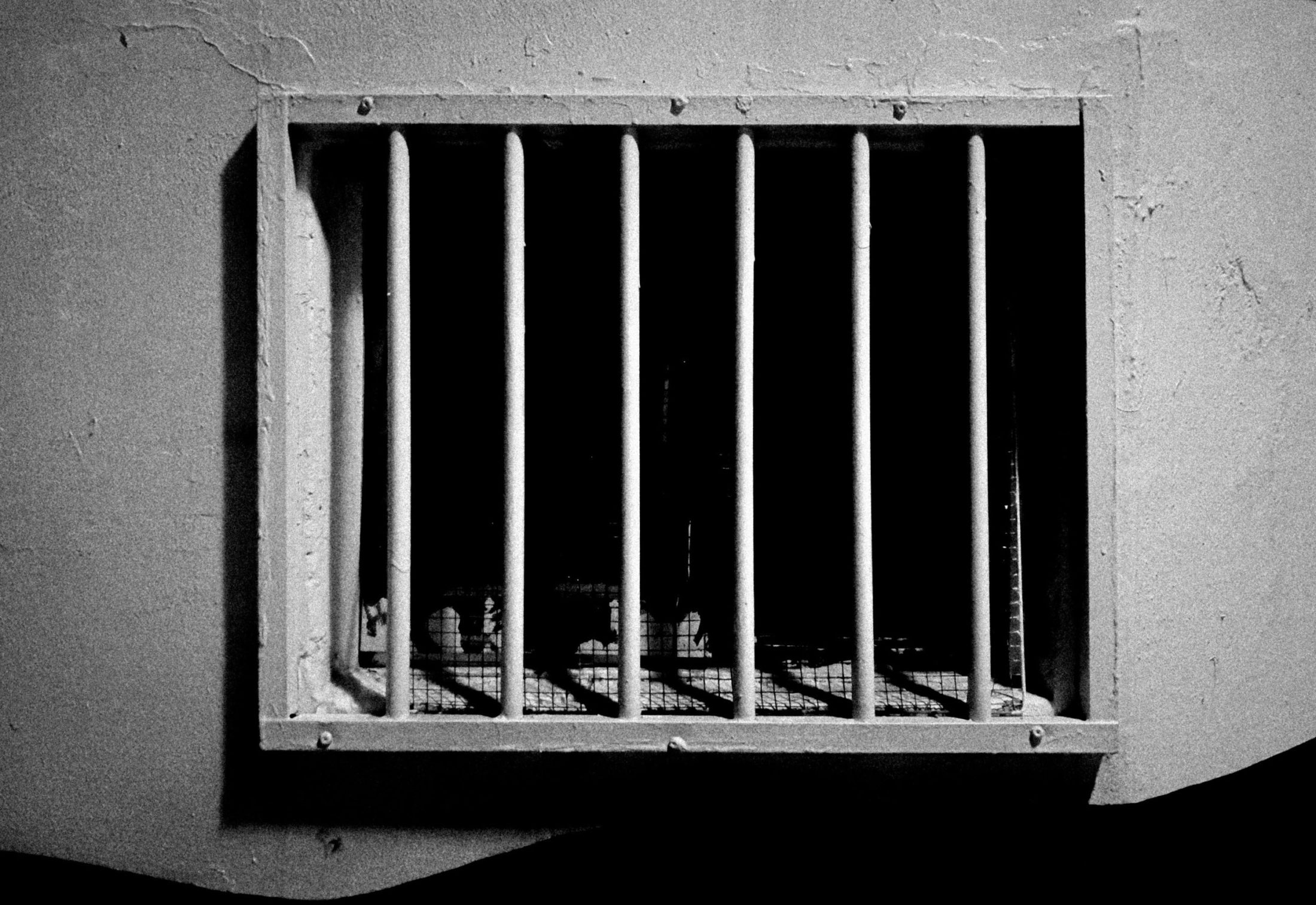Books & Culture
Science Fiction Novels to Help With Your Interstellar Hangover

By now, all your friends and favorite bloggers have inundated your brain with their opinions of Interstellar. It was confusing. It was beautiful. It was beautifully confusing. It was a tribute to science. It was the worst science thing ever. It was a very long commercial for Lincoln Town Car. But while everyone debates the science and the filmmaking, what about the science fiction? Here’s a clutch of contemporary and classic science fiction either referenced or conceptually related to Interstellar.
Mild spoilers for Interstellar and a bunch of science fiction novels ahead.

A Wrinkle in Time by Madeline L’Engle
In describing time travel shortcuts, the character of Romilly (David Gyasi) pokes a hole with a pencil through a folded piece of paper to depict the curvature of spacetime. This diagram is very similar to how Mrs. Who, Mrs. Which, and Mrs. Whasit, describe a “tesseract,” or a “wrinkle in time,” in Madeline L’Engle’s novel A Wrinkle in Time. Later in Interstellar, Cooper’s robot TARS tells him he’s inside of a “tesseract.” Plus, the ultimate spoiler: Love saves the day in both A Wrinkle in Time and Interstellar.

Contact by Carl Sagan
If Interstellar seemed like a sequel to another Matthew McConaughey movie, you’re not going crazy. (Or at least not because of that.) Matthew McConaughey was in Contact, the film version of Sagan’s novel of the same name. The romantic version of McConaughey’s character doesn’t exist in the book, making a sane person wonder if Matthew McConaughey is using real time travel to incept himself in books and movies throughout all of time. In any case, if the wormholes in Interstellar made no sense to you, or you need them explained fictionally for about 400 pages, this is your book. Carl Sagan consulted friend and physicist Kip Thorne for the wormholes in Contact. Interstellar references Kip Thorne (an advisor and producer on the film) by naming Matt Damon’s broke robot Kip. As a novel, Contact doesn’t have the sweetness of Sagan’s non-fiction like Cosmos or Pale Blue Dot, but it does have something Interstellar sometimes lacks: the air-tight science chops.
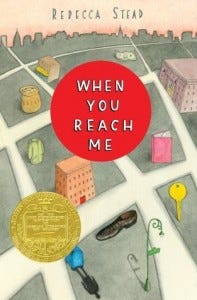
When You Reach Me by Rebecca Stead
Published in 2009, and a certified Newberry Award Winner, Rebecca Stead’s big novel weaves time travel paradoxes into everyday life. When You Reach Me revolves around the central mystery as how “the laughing man” is giving Miranda information about the future. If an old person seems to have all the answers, there’s a chance they do, and not just because they’ve been around for awhile, but maybe because of time travel. In Interstellar, Jessica Chastain’s character Murphy is portrayed in multiple timelines, and thanks to some black hole/relativity action, out-ages her own father. Messages from the future that are really from the past help to construct sci-fi mysteries all the time, even if we don’t always “get” them in the end.

The Accidental Time Machine by Joe Haldeman
Joe Handelman is probably most famous for his science fiction novel The Forever War, which is, for most of us, the kind of text that “fixes,” some of the confusing jingoist tendencies of Robert A. Heinlein’s Starship Troopers. But, some of his more underrated novels play around with time travel and alternate universes in fairly down-to-earth ways. Published in 2007, The Accidental Time Machine deals with a research assistant at MIT named Matt who, indeed time travels by accident. Matt ends up becoming his own ancestor through some insane shenanigans, but avoids creating an information paradox by keeping quiet about Einstein’s theory of relativity, even when he’s hanging out with Einstein. The apparent rapid aging of characters in Interstellar is similar to emotional impact of The Accidental Time Machine. People “suddenly” seem old or young in both of these narratives, but it’s all relative, baby.

The Sirens of Titan by Kurt Vonnegut
Featuring a journey to one of the moons of Saturn (Titan!) and tons of time-travel, this early Kurt Vonnegut novel is probably the one that takes place in space the most. While the characters in Interstellar explored a planet right near a black hole, and time traveled because of it, Vonnegut’s characters are moved through time and space by a kind of roving wormhole called a chrono-synclastic infundibulum. Effectively, this isn’t too dissimilar from Interstellar’s spherical wormhole (also located near Saturn), though Vonnegut did manage to cram Martian invasion into his story, which was weirdly missing from Interstellar.

The Time Traveler’s Wife by Audrey Niffenegger
If you saw the movie, then you know for some reason Eric Bana has been a time traveler twice (Time Traveler’s Wife and 2009’s Star Trek) and that poor Rachel McAdams has been a time-traveler’s girlfriend THREE times (Time Traveler’s Wife, Midnight in Paris, and About Time). The novel, however, is tear-jerker time-travel dynamite. It’s true there’s no explanation, really, for why Henry randomly time travels, but then again, Interstellar doesn’t totally explain what Murphy created in the “future,” nor why exactly Cooper traveled to the particular spot he did. But, both manage to make us have a lot of complicated feelings thanks to time travel.
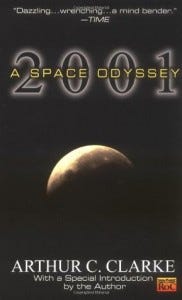
2001, 2010, 2061, 3001 by Arthur C. Clarke
Since paradoxes are the name-of-the-game here, the novel 2001 upon which the film 2001 was based was not actually written before the film. This isn’t to say it’s a novelization of the film (it isn’t,) but rather that it was developed by Arthur C. Clarke simultaneous and in conjunction with the famous Stanley Kubrick movie. The connections between Interstellar and 2001 are so obvious, it’s almost like that giant baby at the end of 2001 actually just grows up to be Matthew McConaughey (or Christopher Nolan?) There are a lot of differences between the novel series and the film series (there is a 2010 movie) but the most jarring one is probably the assertion from Clarke himself that each novel takes place in a slightly different alternate universe from the previous novel. This, more than anything allows for continuity “errors,” just to be different universes. You can either see this as a cop-out or totally brilliant. Thematically, Arthur C. Clarke was very interested in the representation of technologies which were beyond our present comprehension. He famously said “…any sufficiently advanced technology is indistinguishable from magic…” which is why Murphy thinks there’s a ghost in her bedroom, but it’s really just her time traveling astronaut Dad.
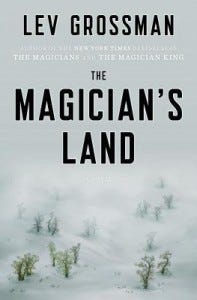
The Magician’s Land by Lev Grossman
Lev would kill me for calling his novels “science fiction,” and not “fantasy,” but one notion in his latest — The Magician’s Land — is very reminiscent of Interstellar. In this novel, we learn that Alice — presumed dead in the first book — is actually alive and has been living as a sort-of ghost in another dimension. When Alice tells the other characters about this, she talks about having the ability to move back across her own timeline; just like Cooper does in Interstellar. Alice doesn’t interfere with it, but she did help out here and there, which is exactly what Cooper is doing by knocking over the books.
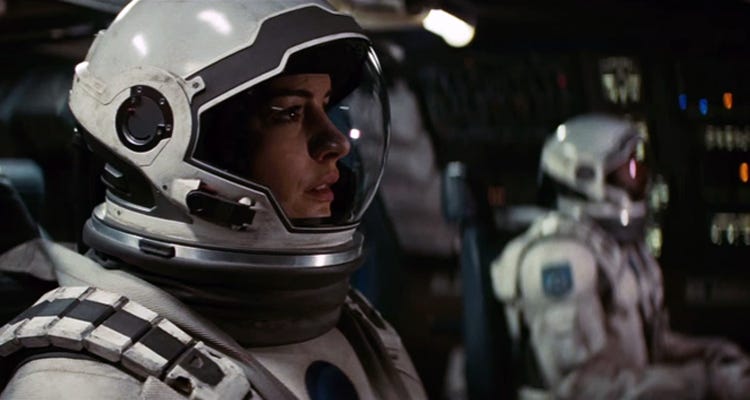
Interstellar may not have been the perfect science fiction movie, but it did depict a science fiction conflict which drove its central plot. True, there was a Hollywood blockbuster-style fistfight in the movie, but most of the “action,” was a little more meditative, science-positive, and bookish. With the existence of Interstellar and the news that co-writer Jonathan Nolan is set to adapt Isaac Asimov’s Foundation series, it appears literary science fiction is making a huge comeback. And since we already live in the future anyway, it’s about time.





